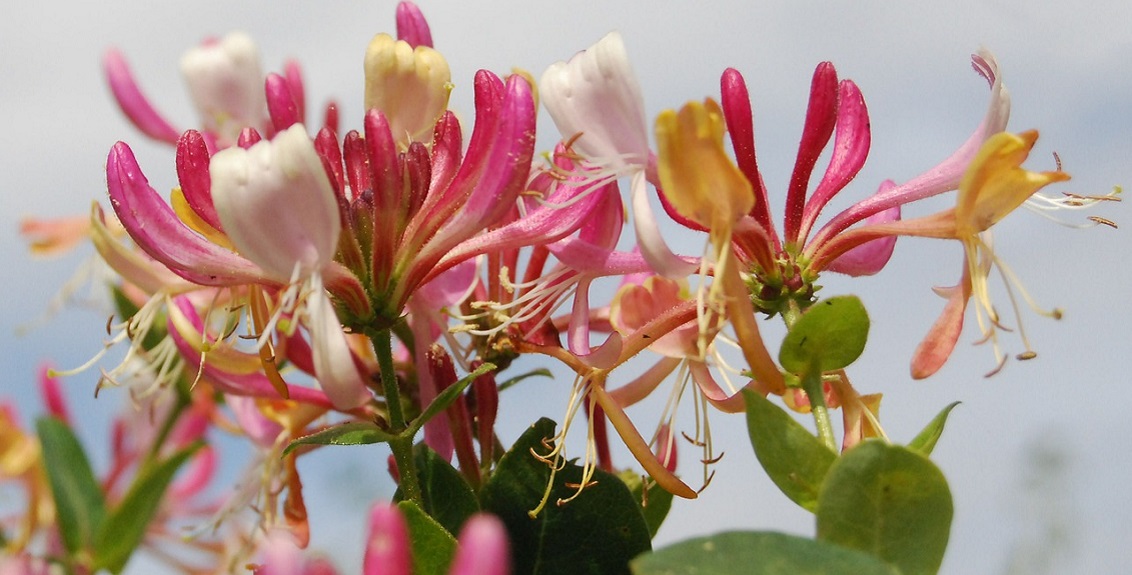Honeysuckle
Honeysuckle are popular garden plants with highly perfumed flowers. There are climbing honeysuckles, which are wonderful draped over pergolas and supports, and evergreen shrubby types, which make good hedging plants.
There are two types of honeysuckle:
- Climbers prefer fertile, humus rich, moist but well-drained soil. Though they will flower best with the top growth in full sun, they are less prone to aphid attack in partial shade.
- Grow shrubby honeysuckles in any well-drained soil in full sun or partial shade.
Both types are very easy to grow. They like a mulch around the base of organic matter, such as garden compost or well-rotted manure, to reduce water stress. And top dressing in spring with general fertiliser will promote growth and flowering.
Pruning And Training
Climbers
- Honeysuckles flowering on the current season’s growth do not require regular pruning. Simply control the growth by cutting back any overlong shoots in spring. Also thin out congested growth and remove weak or damaged stems.
- Honeysuckles that flower early in the season, on short side shoots on the previous year’s growth, should be pruned back by about one-third in late summer immediately after flowering.
- Renovate climbers by hard pruning to 60cm (2ft) from the ground in early spring. Thin out vigorous re-growth and tie in the new shots.
Shrubs
- Prune deciduous shrubs after flowering in late spring or summer. Remove old and weak stems to stimulate new from the base. Shorten about one in three older branches, cutting to a new, upright shoot. Renovate by hard pruning to framework of older branches in late winter or early spring.
- Trim evergreen shrubs used for hedging, three times between spring and autumn. Renovate by pruning to within 15cm (6in) of the ground in early spring.
Moving Honeysuckle
Honeysuckle vines are easy to transplant and should be transplanted in early spring, before the plant begins to grow. Honeysuckle is a tough and sturdy plant and it should easily withstand the transplanting process.
- Choose a new place for the honeysuckle that has rich, moist, well-draining soil – you need a place that receives full or partial sun and has something for the honeysuckle to grow on.
- Dig the new plant site before digging up the honeysuckle. Make sure you dig a big enough hole to put the plant in.
- If the plant is large prune the honeysuckle before transplanting it. Completely remove one-third of the oldest branches and trim one-third off the length of the rest of the branches.
- Dig up the honeysuckle and try to get as much of the root system as possible.
- Enlarge the new hole if it is smaller than the root system or if the root system will not fit in without being crushed. Place the plant in a container filled with water while you enlarge the hole to prevent the roots from drying.
- Put the honeysuckle in the hole. Turn the plant so that the longer vines are closest to the plant support. Shovel the soil around the roots until they are half covered.
- Water the plant in to settle the soil. Finish filling the hole and tamp down gently to remove any air pockets.
- Water the honeysuckle again to settle the soil around the roots. Continue to water daily until the plant puts out new growth. Then reduce the frequency of watering to once a week and give the vine 1 inch of water each time.
DON’T move it if the soil is frozen and don’t water if it’s due to be frosty as the water will freeze.
